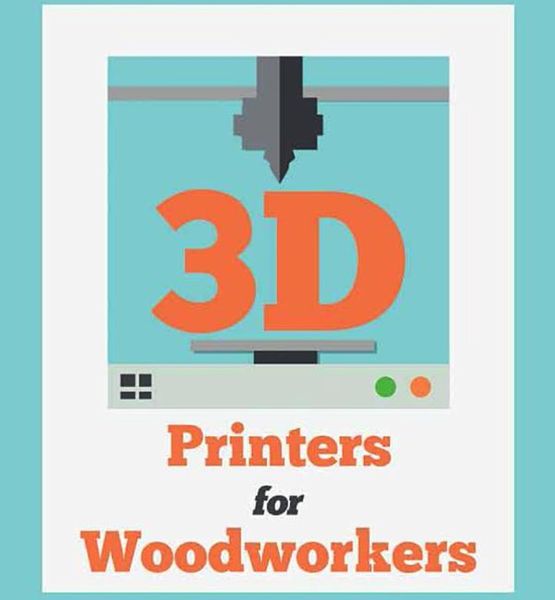
This week’s selection is “3D Printers For Woodworkers” by Henry Doolittle.
If you were to compare the number of people able to do woodworking at home versus the number of those who also use 3D printing, it would be quite a contrast. Woodworking tools are well established with many, and most homes have at least a few woodworking tools present.
Some woodworking hobbyists, however, have more than the usual set of tools and may have more advanced equipment, such as a CNC router for milling. It’s folks like that who are the target for this book.
The idea here is that woodworkers do require different parts for projects on a consistent basis and thus could benefit from the use of 3D printers to make them. They explain:
“The blossoming technology of 3D printing isn’t just for techies―a 3D printer is also the ideal tool for the traditional woodworker. Why waste money buying tools and parts when you can fabricate them yourself with your own 3D printer? You can save hundreds or even thousands of dollars by making your own tools―what’s more, you can 3D print your own custom tools and parts that meet your unique needs.”
I completely agree with this. Woodworkers can require jigs, fixtures, handles, and other items during the course of a woodworking project, just like a manufacturing operation might. If a manufacturing operation can use 3D printing to make these items, then why not in woodworking, too?
Even better, a woodworker that’s already familiar with CNC machining would take very naturally to using 3D printers, which have a very similar CAM workflow. Just the software and hardware are different.
However, even they would need some assistance to get started, and that’s what this book is attempting to do.
As always, the book begins with a brief background on the technology and even includes a bit of the history of how the technology was originally developed in the 1980s. Then it proceeds forward to more current matters.
Doolittle explains the different types of 3D printers that might be used by a woodworker, and provides some buying advice. This is quite important, as I’ve frequently seen newbies get overly excited about less important 3D printer specifications, such as build volume or print speed. Both of those are really less important than whether the machine actually works, or the print quality that is achievable.
The book also explains the software systems required to make the 3D printer work, and this would surely resonate with woodworkers accustomed to using CAM software.
Materials are explained, with emphasis on the application requirements. The print process itself is explained, and this should tie all the knowledge up to that point together.
Every 3D printer operator knows what happens next: the machine breaks and/or the print job fails. Fortunately, Doolittle has included a chapter on “What Can Go Wrong”. This is filled with tips on troubleshooting, and that will certainly be handy as most 3D printer operators go through a learning phase to discover these things by experience. The book can speed that phase up considerably.
If you’re a woodworking that’s considering getting into 3D printing, this may be a book worth reading.
We’re an Amazon Associate and earn a small fee from qualifying purchases. Help support our 3D print news service by checking out this book!
Via Amazon
